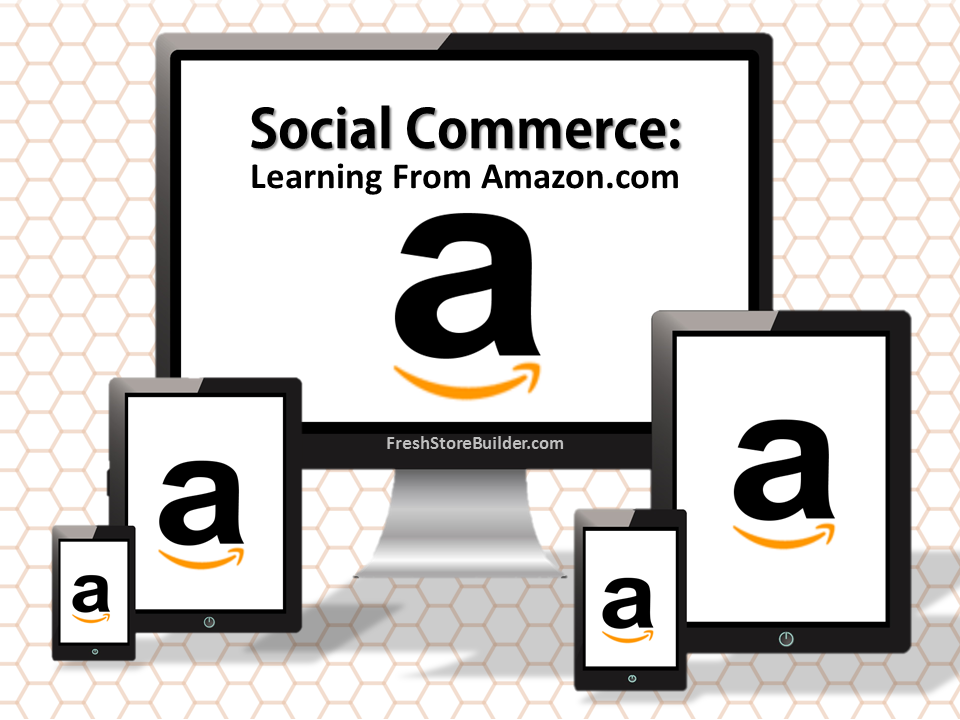Social Commerce: What We Can Learn From Amazon.com
It is said that “success leaves clues” and when it comes to social commerce, Amazon’s uber-phenomenal growth over the past decade leaves so much in its wake for us to learn from. As an Amazon affiliate marketer, you would be wise to take note . . .
What is Social Commerce?
The term “social commerce” was first used by Yahoo back in 2005. Today, it has become a broad term that encompasses a range of technologies, tools and approaches.
However, in very simple terms, social commerce integrates social interaction and user contributions (user ratings, referrals, etc.) to help facilitate the online buying (and selling) process. But just as importantly, it’s about shaping a customer’s online shopping experience.

3 Powerful Ways Amazon Uses Social Commerce To Shape the Shopping Experience
While Amazon was not the first to implement social commerce strategies, I think it’s safe to say they certainly embraced it and took it to a whole new level.
An example of Amazon’s business savvy, is the way that it has integrated social commerce features into its site . . . allowing users to communicate with each other and ultimately using that as a tool to drive more sales.
Here are three ways (among several) that Amazon taps into social commerce to serve customers:
#1: Peer Recommendations
Amazon.com was one of the first big e-commerce sites to make the product review process a core element of the shopping experience. When you buy a product on Amazon, you are encouraged to rate the product and leave a review. In doing so, you provide more information for other buyers.
And this kind of review process works both ways . . . because it makes the negative reviews as important as the positive ones. In essence, it shows that not-so-great products really do get consistently low ratings and/or poor reviews . . . which results in shoppers becoming more likely to trust products with consistently positive reviews.
Bottom line: With “peer” recommendations shoppers tend to feel more confident and justified in making the purchase.
#2: Product Add-On Suggestions
Culled from their database of customer buying habits and ratings, Amazon’s algorithms pull together related products that other shoppers have also purchased and recommend. Go to almost any Amazon product page and you’ll see two of the most significant “product bundling” features:
- “Frequently Bought Together” features the product you are looking at plus one or two more products most other shoppers have bought along with it. And with one click, you can add this “bundle” to your cart.
- “Customers Who Bought This Item Also Bought” is very similar to the above and features a scrolling round-up of other products people tend to buy plus Amazon’s product suggestions.
Bottom line: Shoppers really pay attention to what others are saying and doing, which is why both of these features have proven to be powerful ways to ramp up and solidify sales.
#3: Customer Questions and Answers
Potential buyers of a product can read all of the product’s reviews and ratings but sometimes they may have a specific question about the product that’s not readily available.
With the “Customer Questions and Answers” feature, Amazon allows you to connect with other customers to ask a question.
Bottom line: Customer-driven Q & A’s tap into the power of peer interaction which helps propel sales.
How You Benefit From What Amazon Has Done
As an Amazon affiliate, you get to benefit from the work that Amazon (and its customers) have already done:
- Peer Reviews: When choosing to recommend products to your own site visitors, you can feel more confident that you are representing quality, best-selling products. And you can refer to the social proof to back it up.
- Product Add-Ons: When you direct customers to a product page, there are a few ways shoppers are enticed to buy even more . . . which can increase your commissions.
- Customer Q & A’s: Again, Q & A’s give shoppers more confidence in making decisions and as an affiliate, you can also use helpful responses from that section to re-word and incorporate into your own reviews.
So when you’re using FreshStore to create an Amazon store . . . know that Amazon is all about maximizing the shopping experience to make it a WIN-WIN-WIN for their own bottom line . . . their vendors and affiliates . . . and of course, their customers.
